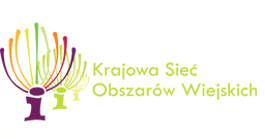LEADER/CLLD declaration for 2021-2027 programming period
The European LEADER association ELARD has drawn up a declaration on LEADER/CLLD for the 2021-2027 programming period.
The declaration is available here or at ELARD website www.elard.eu.
This declaration takes into account the outcomes of ELARD conference “Renewing LEADER/CLLD for 2020+; Celebrating 25 years of LEADER in Europe” in Tartu, Estonia in which 140 delegates from 25 European countries representing about 2,000 LEADER Local Action Groups (LAGs), LEADER networks, representatives of the European Commission, the European Rural Network as well as rural networks and ministries of Member States took part.
The declaration takes into focus the LEADER approach that should again turn its face toward its main purpose – the empowerment of local communities. The key principles of the LEADER method have to be re-asserted and treated with full respect when designing policies and the implementation framework at the Member State and European level.
Multi-funded CLLD (Community Led Local Development) creates new possibilities for integrated rural development. It should, however, become clearer which of the European Structural Investments Funds should support what. Member States/regions should be able to design a single CLLD source of funding from the various ESI funds and implement it under one coordinating body (Managing Authority) following one unique set of rules at the EU level.
The declaration invites the European Commission and Managing Authorities in Member States to be in close dialogue and partnership with LAGs and their representative LEADER networks, while designing the new implementation framework for LEADER/CLLD. Instead of focusing on preventing mistakes we should think more about the needs of communities and how regulations can really support local beneficiaries and LAGs when implementing their local development strategies. It is necessary to create conditions allowing LAGs to concentrate on their role of animating the area and helping the best ideas to emerge and be implemented.
A balanced legal framework is needed to ensure the correct application of the LEADER method and its principles in Member States on the one hand, and a significant decrease in the bureaucratic burden that lies on LAGs on the other hand.
Additional information: Kristiina Tammets - President of ELARD www.elard.eu Phone: +372 5340 9873, e-mail: kristiina.tammets@elard.eu
- The key principles of the LEADER method are: the bottom-up approach, area-based local development strategies, public-private partnership, innovation, an integrated and multi-sectoral approach, networking and cooperation, decentralized administration.
- LEADER has been implemented in Europe for 25 years.
- Main beneficiaries are: local NGOs, enterprises, municipalities, Local Action Groups.
- There are almost 2,600 Local Action Groups, operating in geographical areas which are home to 161 million European citizens.
- Total public funding of LEADER for 2014-2020: 9.6 billion euros.











